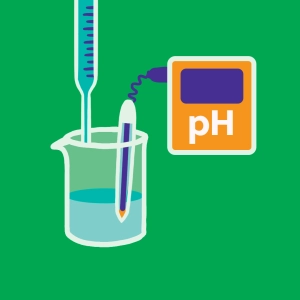 Titration Experiment
Titration Experiment
Titration is an experimental technique that allows us to know the concentration of an unknown acid or base.
The method relies on the principle of neutralization of an acid with a base.
The volumetric method illustrated here is to determine the volume Vb of a known base with concentration Cb, that is necessary to neutralize a certain volume Va of an unknown acid of concentration Ca.
In this animation, the base is NaOH (sodium hydroxide) and acid is HCl (hydrochloric acid).
During the neutralization of the acid by the base, we get the following equation:
VaCa = VbCb
From this equality, we can deduce the concentration of the acid:
Ca = VbCb / Va
Click on the stopcock or the "add 5mL of NaOH" button.
